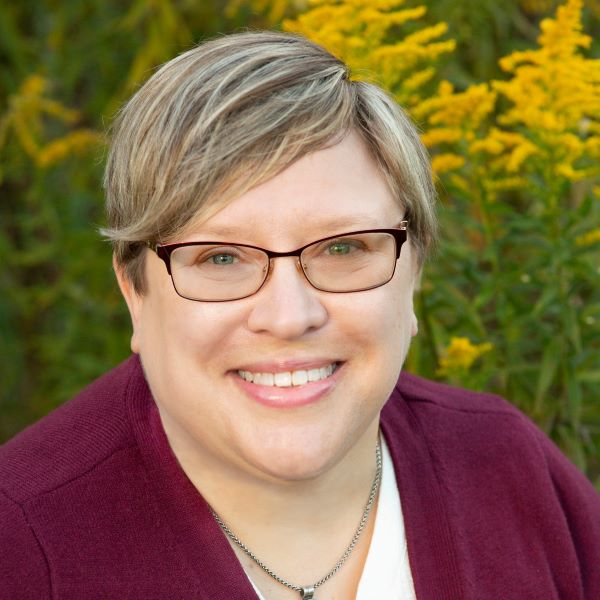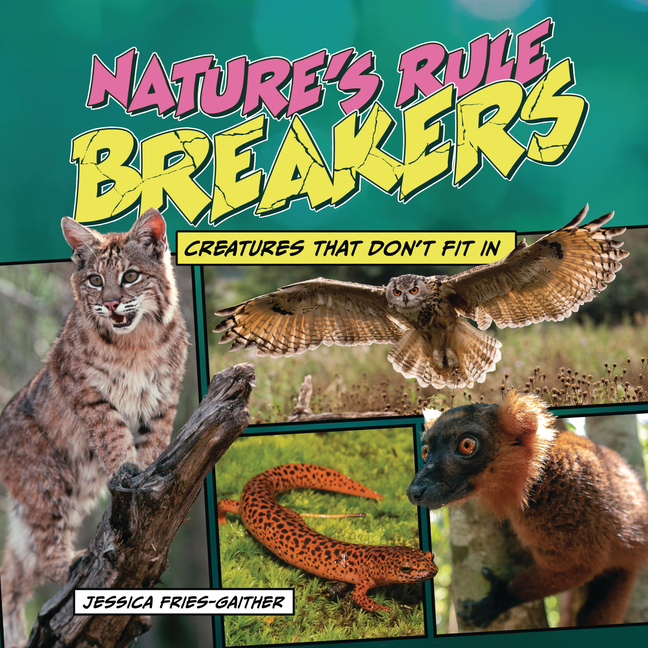From Teaching to Writing

TeachingBooks asks each author or illustrator to reflect on their journey from teaching to writing. Enjoy the following from Jessica Fries-Gaither.
Being the Glasses
by Jessica Fries-Gaither
I started wearing glasses in my junior year of high school. I realized that I was having a tough time reading the small print on the periodic table that hung on the wall of my chemistry classroom. My mom wasn’t sure I actually needed them—I wasn’t having trouble seeing anything else—but a visit to the eye doctor showed that I did, in fact, have a minor deficit. The doctor said it was up to me if I wanted to wear glasses, and I insisted that I needed them. So, my parents bought me a rather unattractive, large framed, covered-by-insurance pair. They weren’t stylish or cute by any measure, but I could finally stop whispering to my neighbor during chemistry quizzes to get the atomic mass of an element. For me, that small shift made all the difference.
Fast forward many years, and my glasses are now part of my everyday look. I’ve actually even leveled up to “progressives,” which to the best of my knowledge is the modern-day kinder term for bifocals. Isn’t aging fun? But I’ve also recently begun thinking of glasses in a different way—as a metaphor for my role as a teacher and a writer.
My goal as a science teacher has always been to help students to understand and appreciate the wonder of the natural world, whether it be the astonishing diversity of living things or the principles and rules that govern how living and nonliving elements interact and produce the phenomena we experience all around us. In fact, when tasked with writing my teaching philosophy in graduate school, I chose to compare my role as teacher to that of a trail guide. I’d lead my students along the trail of discovery, pointing out things to notice as we walked. This philosophy informed my teaching style, and my classroom was full of student activity, projects, and investigations. 25 years later, you’ll still see much of the same in my teaching, but I’ve grown to view my role in a slightly more sophisticated way. Instead of just guiding my students to see, I’m teaching them how to look.
And that’s where the glasses come in. Physical glasses can sharpen details that were once blurry and enable us to see and notice things we might have previously overlooked. They can help us get closer to an object, or to see the big picture more clearly. Wearing glasses can change your perspective. And that’s what I try to do with my students, each and every day.
What does this have to do with career as an author? It turns out, my goal is the same. I was actually inspired to write my first picture book, Notable Notebooks: Scientists and Their Data (NSTA Kids, 2017), as I unpacked a giant stack of composition books for my elementary students one August. Wouldn’t it be great, I mused, if there was a read aloud that I could use to introduce notebooking to my students? And show them that scientists also use notebooks in their work? Wouldn’t it be great to help students see themselves in a different way, just through the use of this tool? There wasn’t such a book available, and so, after a year of uncertainty and doubt, I decided to write it myself. The book was well received, and comments from my own students showed that I had, in fact, helped them put on a pair of metaphorical glasses.

Helping children see differently was the catalyst for my newest picture book, Nature’s Rule Breakers: Creatures That Don’t Fit In (Lerner, 2023). It all began a few years ago when I came across a tweet that simply read, “Biology isn’t binary.” Those three words got me thinking about how different that perspective was from most elementary science curricula and resources that categorize living things into black-and-white categories. What would it be like, I wondered, to introduce elementary students to some of the gray that actually exists? How could I do that in an accessible and engaging way? Brainstorming and conversation helped me generate a long list of both categories and exceptions to those categories. I ultimately narrowed my list down to eight binary pairs of categories (including nocturnal/diurnal, warm-blooded/cold-blooded, and male/female) and several examples of animals who were both, neither, or somehow in-between.
Writing has allowed me to throw open my classroom doors and reach many more children than I ever would be able to in person. In many ways, it is a natural extension of my teaching career. And as a result, my overarching goals are the same: to help kids notice amazing creatures and phenomena they might have otherwise overlooked, to encourage them to dig deeper in order to better understand, and to challenge them to see and understand the bigger picture. In other words, through my books and through my teaching, I hope to be a pair of trusted glasses for kids and their grownups everywhere.
Books and Resources

TeachingBooks personalizes connections to books and authors. Enjoy the following on Jessica Fries-Gaither and the books she’s created.
Listen to Jessica Fries-Gaither talking with TeachingBooks about the backstory for writing Nature’s Rule Breakers. You can click the player below or experience the recording on TeachingBooks, where you can read along as you listen, and also translate the text to another language.
- Listen to Jessica Fries-Gaither pronounce her name
- Enjoy this interview with Jessica Fries-Gaither
- Discover Jessica Fries-Gaither’s page and books on TeachingBooks
- Visit Jessica Fries-Gaither on her website, Twitter, Instagram, Facebook, LinkedIn, and her GoodReads page.
Explore all of the For Teachers, By Teachers blog posts.
Special thanks to Jessica Fries-Gaither and Lerner for their support of this post. All text and images are courtesy of Jessica Fries-Gaither and Lerner and may not be used without expressed written consent.



Leave a Reply